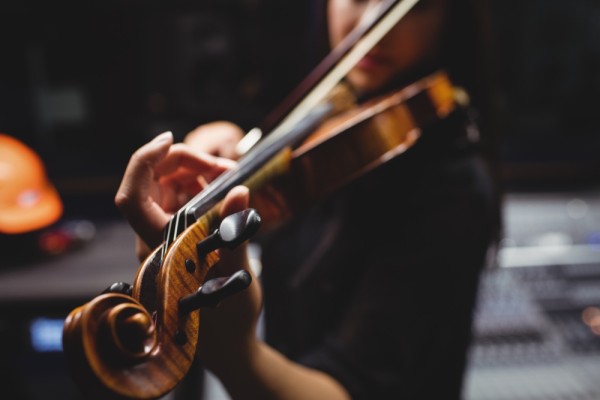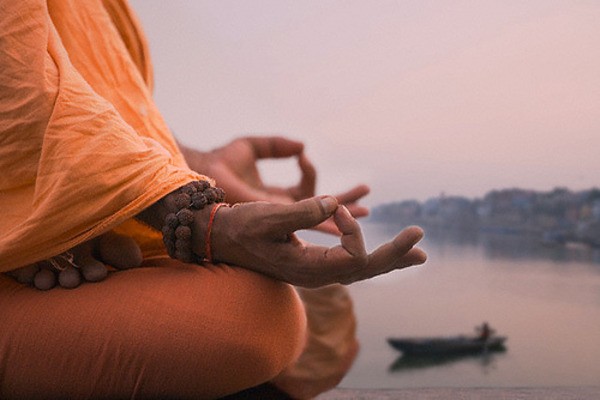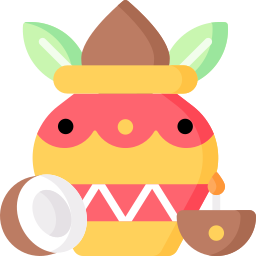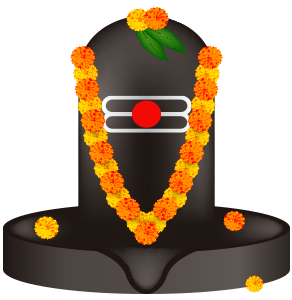
Unleash Your Rhythmic Passion At Music Classes In Brampton
या कुन्देन्दु तुषारहार धवला या शुभ्रवस्त्रावृता।
या वीणावरदण्डमण्डितकरा या श्वेतपद्मासना।।
या ब्रह्माच्युतशंकरप्रभृतिभिर्देवैः सदा वन्दिता।
सा मां पातु सरस्वती भगवती निःशेषजाड्यापहा।।
Introduction
We channel our sorrow through music! We conduct our strength through music! Music for happiness- for fun- for pain- for frolicking. Music works as the most powerful coping mechanism. Argee? Surely you do!
Do you find yourself tapping into the beat of classical instruments? Do you feel enchanted by the soulful harmonic horizon? Hence, you must embrace the unearthed passion for music within you!
Veda says music is a powerful medium to connect with our Divine, our true soul, other than some fragrant sticks and flowers. Enlighten yourself with the world of Ragas and Talas by joining music classes in Brampton.
The ever-changing soulful soundscapes have fused themselves with classical and contemporary instruments. The blend has become so powerful that instrumentals are touching new heights. But one cannot acquire this symphonic bliss without knowing its roots. Let us shed some light on the history of Indian music and its sanctuary.
Origin of Indian Music
Scriptures say the art of music is introduced to the earth by Narad Muni(sage). The origin of the music Of Hindu Sanskriti can be traced back to the Shama Veda. It is enriched with slokas and hymns that depict the meaning of every emotion of life. Rooted in a rich cultural heritage, Indian classical music spans centuries. It encompasses a profound blend of melody, rhythm, and emotion. It is a tapestry of intricate ragas, soul-stirring compositions, and virtuosic improvisations that transport listeners to serenity.
At the core of Indian classical music lies the concept of "RAGA" and "TALA", also known as TAAL. Ragas evoke our emotions and moods, capturing the essence of different times of the day, seasons, and life experiences. Each raga has its unique combination of notes, ornamentations, and melodic patterns.
As a musician, being a part of music classes in Brampton allows you to explore a vast landscape of expression and creativity.
Tala, on the other hand, refers to the rhythmic aspect of the music. It's more about the beats in the music. The rhythmic cycles and the minute mini-patterns of taal provide a solid foundation for improvisation and collaboration of new tunic triumph.
Some Melodic Insights of Music Classes In Brampton
Now that we have introduced you to the basics of Indian music, here are some glimpses of ragas and talas from our music classes in Brampton…
1. Ragas
It is classified into two main types: the Hindustani (North Indian) ragas and the Carnatic (South Indian) ragas. While they share similar fundamental principles, some distinctions in structure, ornamentation, and performance style exist.
2. Hindustani Ragas
Hindustani ragas are prevalent in the northern regions of India and have gained popularity worldwide. This raga is relatively free-flowing. You will learn some ragas in-depth upon joining music classes in Brampton.
1. Raag Bhairav
A morning raga is associated with a holy and serene mood. It is practised at dawn.
2. Raag Yaman
A raga often performed during the evening evokes a romantic and contemplative mood.
3. Raag Todi
Known for its deep and introspective nature, raga Todi is typically performed in the early morning hours but not at first light.
4. Raag Bageshri
Raga Bageshri creates a sombre and thoughtful atmosphere, usually performed late evening.
5. Raag Malkauns
A raga that portrays a sense of mystery and longing. It is performed in the late evening or at night. Some say raag Malkauns is the raag of winter too.
3. Carnatic Ragas
Carnatic ragas have evolved in the southern regions of India. They exhibit a more structured and rigorous approach, with precise rules governing the melodic patterns and ornamentations. Some notable Carnatic ragas include:
1. Raag Mayamalavagowla
This is considered the fundamental raga. It serves as the basis for numerous compositions in Carnatic music.
2. Raag Kalyani
Known for its encouraging and uplifting nature, Kalyani is a popular raga performed during concerts. In Hindu Sanskriti, the term Kalyan is referred to as having prospered.
3. Raag Bhairavi
An emotionally powerful and versatile raga that can convey a wide range of moods, from devotion to sadness. It is the counterpart of raga Bhairav and is practised as the last raag of the day.
4. Raag Todi
Like its Hindustani counterpart, the Carnatic Todi also evokes a deep and thoughtful sentiment.
5. Raag Mohanam
This raga is often associated with joy, and its musical nature makes it a favourite for its alluring essence.
This is not the end! There's more to Ragas. As an aspiring artist, you must understand these are just a few examples of the vast repertoire of ragas in Indian classical music. There are hundreds of ragas, each with unique characteristics, nuances, and emotional appeal. The beauty of ragas lies in your ability to evoke deep emotions and transport listeners to the peaceful realm of musical peace. Also, you can provide a profound harmonic experience that transcends language and cultural barriers.
4. Taal/Tala
The concept of taal was explained by Bharat Muni in Natyashastra. Every beat in a piece of music that makes you clap or nod or tap your feet is taal. Are you familiar with the terms Tintaal, Ektaal, Dadra, Jhampa, Matya, Dhruva, and so on? These are the taals/thaalams used in every form of musical art. A profound knowledge which will make you able to compose your music. Let's have a look at the variations of taal.
Like raga, taal is divided into two halves, Hindustani Taal & Carnatic Taal.
5. Hindustani Taal
Hindustani classical music revolves around ten types of taal. These are - Teentaal, Jhoomra, Tilwara, Dhamar, Ektaal, Chautaal, Jhaptaal, Keherwa, Roopak and Dadra.
6. Carnatic Taal
Carnatic taal is vast in itself. It includes several taal houses, Jatis, and Angas. The 6 types of Carnatic taal are - Dhruva, Matya, Rupaka, Jhampa, Triputa, Ata, and Eka.
These basics of Indian classical music are practised in 3 layas - Vilambit laya, Madhyam laya, and Drut laya. The proper blend and synchronization of these technicalities will lead you to the peak of music creation.
Conclusion
When speaking of Indian classical music, along with Vocals and harmonic harmonium, tabla, sitar, sarod, sarangi, mridangam, and many other instruments come along.
After that, you must enrol in a classical music class to fill yourself up with your musical roots and nurture your musical passion with proper knowledge and not some random unclear youtube information. At Shri Gauri Shankar Mandir, you will gain deep insights into Indian classical music and learn to play the musical instruments of this genre. Learn from the gurus of music classes in Brampton. Please take part in our host of musical events.
There is no need to feel secluded from your cultural music. We have brought you the sonic serenade miles away from your homeland right in the presence of our Divine.





